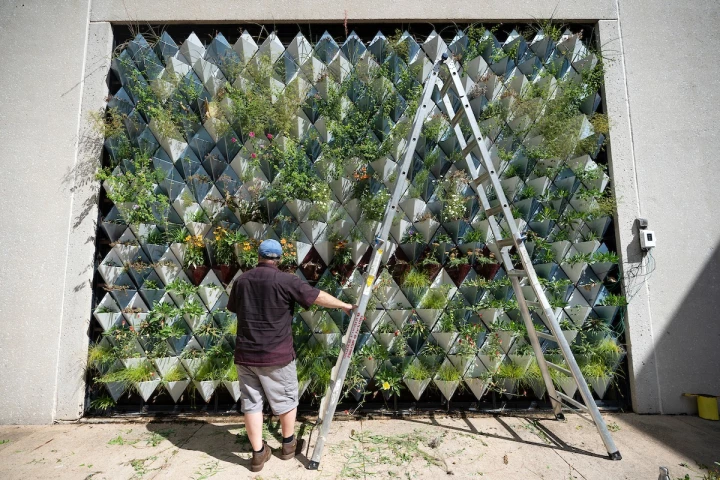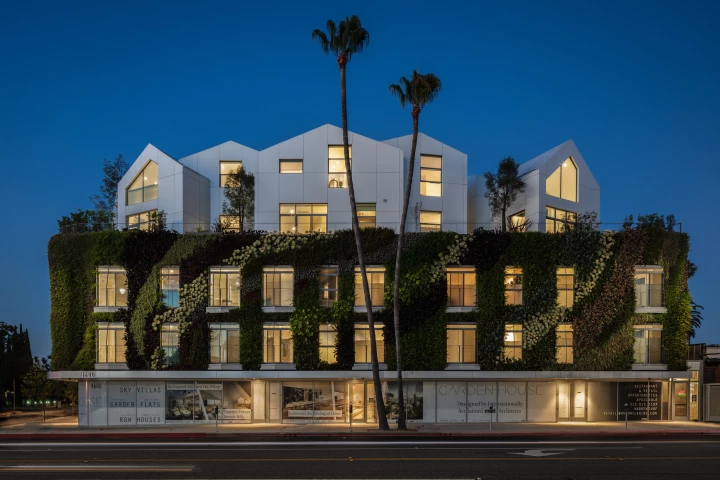Living Wall
-
Plant-covered "living walls" are becoming increasingly popular, as they look nice, produce oxygen, and (when outdoors) help keep buildings cool. A relatively new one is claimed to be more plant-friendly, plus it's made of recycled materials.
-
Along with benefits such as air purification, "living walls" are also said to help regulate the temperature within new buildings which they're built into. A study now indicates that they have the same effect when added to older, existing structures.
-
A "hillside village" has appeared in Beverly Hills. Named Gardenhouse, the greenery-covered project is by Chinese firm MAD Architects and is designed to offer residents a pleasant escape from the bustle of city life.
-
A new residential community in Beverly Hills, Los Angeles, will be raised high above the street and wrapped in a huge living wall. Designed by MAD Architects, 8600 Wilshire will also feature a lush hidden garden for its residents. MAD says it will coalesce nature and community.
-
A new living wall is being claimed as the largest in Europe. Measuring 1,027 sq m (11,055 sq ft), it comprises around 97,000 plants and is installed along the sides of a recently built multistory parking structure at the headquarters of the UK's National Grid on the outskirts of Warwick.
-
A design firm has created what it says is the tallest indoor vertical garden in the world. Green Over Grey installed the living wall at the Desjardins building in Lévis, Quebec. Called "The Currents," the wall is inspired by views of the St. Lawrence River visible from Quebec City and Lévis.
-
New York-based Suite Plants has put planter in a frame that hangs on a wall like a painting for the high end, low maintenance LivePicture. Two sizes are produced, a frame with one interchangeable cassette holding nine plants called VanGrow, and a RemPlant unit that's home to two cassettes.
-
Consisting of over 8,000 plants of 32 different species, Edmonton International Airports Living Wall continues the trend of living vertical installations.







